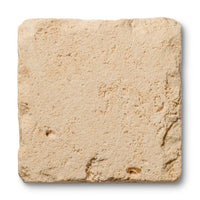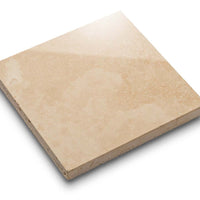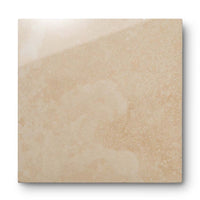Travertine vs. Limestone: Which is Right for You?

Natural stone elevates both exterior and interior projects with timeless sophistication. Travertine and Limestone are two premiere choices that deliver exceptional durability, aesthetic appeal, and a wide variation in color and structure.
Making the correct selection hinges on project requirements and surrounding design elements, and our experts at MATERIAL Bespoke Stone + Tile are here to guide you through the process. This comprehensive guide carefully examines key stone comparisons, highlighting the benefits, drawbacks, and best applications for Travertine stone and Limestone.
The Key Differences Between Travertine and Limestone
In 2025, we can expect an uptrend or resurgence of Travertine and Limestone. The charm and enduring appeal of each remain a top choice for interior designers and design professionals, from earth-toned tile to rustic decorative mosaics.
Travertine 101
Travertine is an exceptional natural stone for those looking to add sophistication and distinctive visual character. This type of Limestone is distinguished by its unique formation process, where sedimentary deposits are transformed by hot, alkaline water flows to create a stone characterized by intricate veining and nuanced textural variations.
Travertine is beloved for its versatility across architectural and design applications, including hand-carved fireplaces, mosaics, mouldings, columns, and poolscapes. Explore our best-loved classics of this contemporary favorite, from Seville to Maderno, Latte Vein-Cut and Carmel Travertine. Cross-cutting or vein-cutting adds visual depth and enhances the striking patterns of the stone. Additional benefits and characteristics include:
Travertine Drawbacks
Ideal Applications For Travertine



Limestone 101
Like Travertine, Limestone is a sedimentary rock with a fascinating origin. Formed in warm, shallow waters, this natural stone is derived from organic debris with traces of quartz minerals that contribute to its unique composition. Over time, water currents and chemical processes cement these sediments, resulting in several exquisite stone colors, from beige and charcoal to cream.
MATERIAL’s exquisite limestone selection—featuring Pierre Noir, Sienna, and French Beige Limestone—offers exceptional quality, making it ideal in diverse architectural applications, including indoor flooring, wall tiles, fireplace surrounds, architectural columns, and custom kitchen hoods. Additional benefits and characteristics include:
Limestone Drawbacks
Ideal Applications For Limestone



Since 1965, MATERIAL Bespoke Stone + Tile has been delivering the very best in world-class stone. For more information on our Travertine and Limestone selections, schedule a virtual appointment online or contact us by phone to learn more about our showroom locations.
Please note: comments must be approved before they are published.
* indicates a required field
Our finishes are applied by hand, ensuring that each element of your order matches and blends together well. In some instances, you may notice a natural variation in the application of the finish. This is normal and should be expected with a handmade item.













